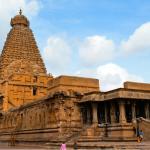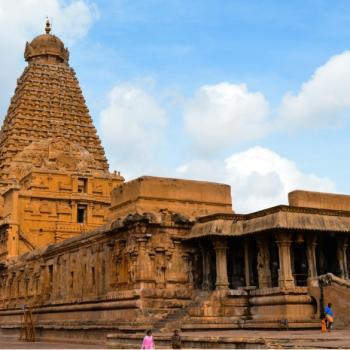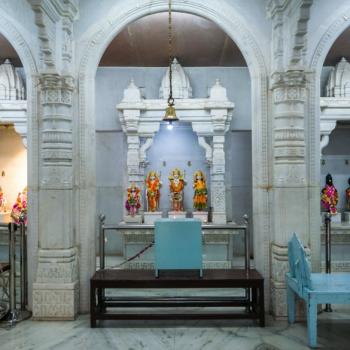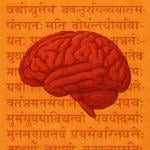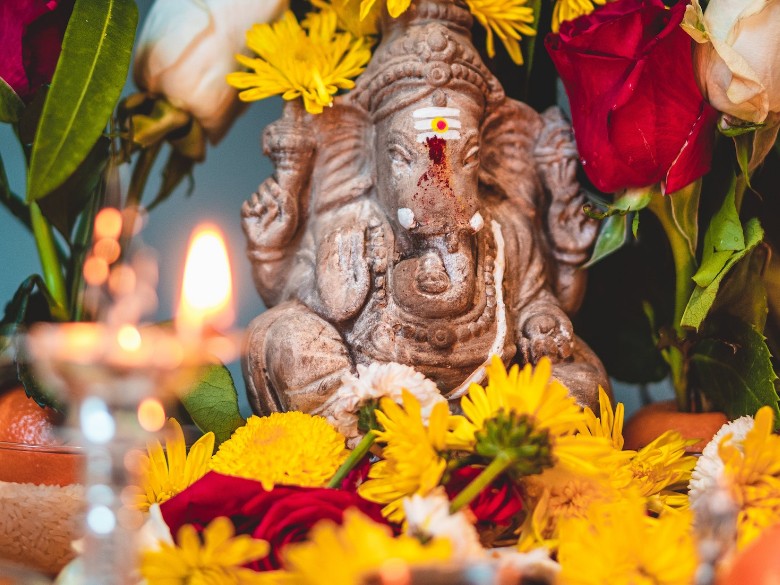
One of the most common misconceptions when people look at Hinduism is that all Hindus are “idol worshippers.” In this article, I will explain why idol worship (seen from the traditional outsider view) is not actually practiced within any Hindu sect, and I will elaborate on the deeper insights into some of the conventional practices like puja(worship).
Is it an Idol, Bimba, or Murti?
The word idol is traditionally used to denigrate ancient Hindu practices as “superstitious.” The correct terms to use are Bimba, Murti, or Vigraha. Bimba means “reflection,” so in the Hindu tradition, the bimba is seen as the reflection of God and not God itself. Similar to how a bucket of water, when still, can reflect the moon. We all know the reflection is not the moon, but it is an image of it. In this way, we can say that bimba is nothing but worshiping the idea of God within a physical image made from any number of substances.
A Murti is essentially the embodiment of God and is a symbolic representation of the highest reality known as Brahman or Divine Consciousness. Some murtis, such as those in temples, go through a series of intense and esoteric processes in which “prana pratishta” is done, which brings in all the Divine energies into the sacred form and ensures those sacred energies are retained for at least 12 years.
A vigraha, like a murti, is another similar term that means a transcendental form of Brahman or Satchitananda.
It is Not Worship of the Murti but Worship Through the Murti
When a Hindu is seen praying before their favorite God or Goddess in the temple or performing their daily puja practice within the home, it might look like they worship a stone or metal image. However, this practice is about connecting through the image rather than believing the image itself is God. The murtis are viewed as physical representations to help them focus their prayers. A similar style of prayer can be seen even in some Christian or Catholic churches today, where the faithful are seen kneeling in front of a statue of Christ on the cross and reverently praying to it. They don’t believe the statue is Jesus, but they are using it as a focus to pray to Jesus whom they believe in. Similarly, Hindus use these outward murtis to connect with the Divine Consciousness that resides within everything.
Hindus Believe Everything is God, so Everything is Worthy of Worship
One of Hinduism’s most beautiful and profound aspects is the understanding that everything is ultimately Brahman or Universal Consciousness. For a Hindu, nature is God, and, as such, all the plants, trees, and mountains are worthy of worship. Every animal and human being on this planet also manifests that Divine Consciousness and is worthy of worship. There are even special auspicious days each year where tools and even books are worshiped because they are also considered a manifestation of God and worthy to be worshiped. There is a story from the life of Swami Chinmayananda that perfectly illustrates this point. One evening, after giving a discourse, a person approached him and said, “My religion is the greatest because we only have one God, so we are great!” Swami replied, “You may have one God, but in the India Tradition, there is ONLY God! There is nothing which is not God.”
Murti’s Contain Deep Spiritual Truths Within Beautiful Forms
When Hindus perform their daily puja within the home or if they are watching a more elaborate puja within the temple, the image of the Deity contains many profound truths that reveal wisdom for seekers. For instance, the image of Ganesha is filled with spiritual insight. His small eyes remind us to maintain a single-minded focus. His big ears symbolize the ability to truly listen and not just hear. His big head reminds us to have strength and courage. His four arms represent the mind, intellect, ego, and Self. Like this, all the various forms of God within the Hindu pantheon hold many profound secrets within their physical form, and these are the traits that the Hindu tries to imbibe.
In conclusion, one must understand the deeper layers of Hindu practices to understand its tradition’s depth and beauty fully.


